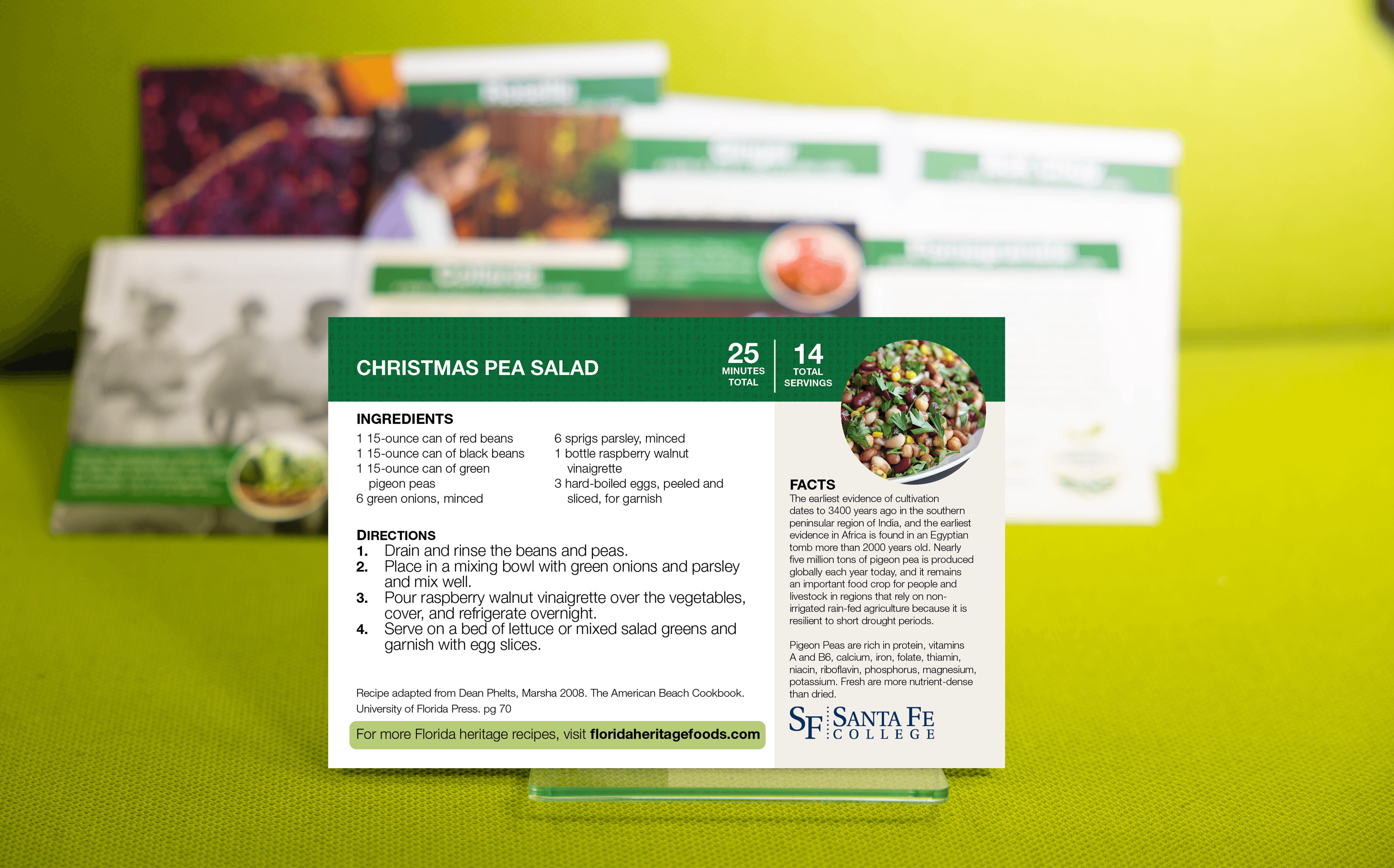Pigeon Peas
Cajanus cajan

Gandul (Spanish), तूर (toor, Hindi), 印度的)木豆 (yìn dù de, (Mandarin), કબૂતર વટાણા (Kabūtara vaṭāṇā, Gujarati), mbaazi ya njiwa (Swahili), digir xamaam (Somali)
Pigeon pea is an ancient plant that has been in cultivation for more that 3000 years in parts of Africa and India. It spread to the Americas through European colonialism during the 17th century, and it is an important food crop in tropical and semi-tropical areas throughout the world. Pigeon pea is a critical source of food for humans and livestock in drought-prone areas because it is resilient against long periods without rain. The hardy nature of the pigeon pea is receiving greater recognition among a growing number of home gardeners and small farmers in Florida today.

The origin of the pigeon pea is heavily debated with the most genetic diversity centered in two locations; India and Africa. The earliest evidence of cultivation dates to 3400 years ago in the southern peninsular region of India. It is believed to have spread to East and North Africa via trade, and the earliest evidence in Africa is found in an Egyptian tomb more than 2000 years old. Cultivation continued to spread throughout Africa, and it became a common staple in tropical and semitropical regions in the continent. European colonialism introduced the pigeon pea to the Americas during the 17th century, and it became an established food crop in tropical and semitropical areas of Latin America, the Caribbean and the Southern United States. Nearly five million tons of pigeon pea is produced globally each year, and it is an important food crop in regions that rely on non-irrigated rain-fed agriculture because it is resilient to short drought periods. Many international aid organizations are promoting pigeon pea in drought prone areas to increase food insecurity. Small farmers usually intermix pigeon pea with cereal crops, such as corn, because the pea also adds nitrogen to the soil. The resilience of the pigeon pea is gaining recognition among home gardeners and small farmers throughout Florida today.
Pigeon peas have been grown as food for people and animals for thousands of years. They are consumed dried, green and ground into a flour. Many cuisines in Asia and Africa combine pigeon pea with a cereal such as corn or rice because the pea adds a significant amount of nutrients to a high-carbohydrate cereal dish. diets. Dried peas can be sprouted prior to cooking to change the taste, and sprouting increases the digestibility of dried pigeon peas. In Swahili-speaking region of East Africa such as Kenya, pigeon peas are made into a coconut curry called bharazi and served with donuts for breakfast in dishes such as mbaazi na mahamri. In Ethiopia, the young shoots and leaves are also cooked and eaten with the peas. In Nigeria the Igbo dish, Achịcha, combines pigeon peas with cocoyam and palm oil. Pigeon peas are prepared in a wide range of diverse dishes throughout southern India, and they are most commonly consumed in dahl with rice. Similarly, pigeon peas are served with rice throughout the Caribbean, and arroz con gandules (rice with pigeon peas) is the national dish of Puerto Rico. In the Southern region of the United States, pigeon peas are not as popular as black-eye peas, but they are prepared in similar recipes when they are consumed. Pigeon peas are also an important source of fodder and animal feed. The American English name ‘Pigeon Pea’ stems from the historical use of the peas as fodder for pigeons in the Caribbean. In poorer countries prone to drought, the peas, leaves and stems are critical feed for livestock.

Pigeon Peas are rich in protein, vitamins A and B6, calcium, iron, folate, thiamin, niacin, riboflavin, phosphorus, magnesium, potassium. Fresh are more nutrient-dense than dried.


Plant March through June and harvest in fall, October through December. Plant via direct seed but be aware the pigeon pea is frost sensitive; transplants should be handled with care as they have weak root systems.
To plan, a heritage garden, download the ‘Planning a Florida Heritage Garden (PDF).’

Santa Fe College Partnered with Multiple Organizations in a Collaborative Effort to Bring Awareness of the Heritage Plants In Florida.
BY CULTURAL HISTORY
BY GROWING SEASON
DROUGHT TOLERANT PLANTS
Commitment to Equal Access and Equal Opportunity
Santa Fe College is committed to an environment that embraces diversity, respects the rights of all individuals, is open and accessible, and is free of harassment and discrimination. For more information, visit sfcollege.edu/eaeo or contact equity.officer@sfcollege.edu.
SACSCOC Accreditation Statement
Santa Fe College is accredited by the Southern Association of Colleges and Schools Commission on Colleges (SACSCOC). For more information, visit sfcollege.edu/sacscoc.
